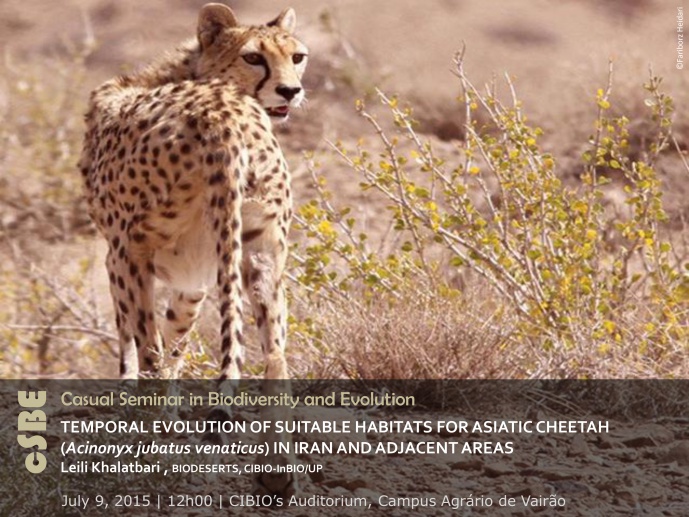TEMPORAL EVOLUTION OF SUITABLE HABITATS FOR ASIATIC CHEETAH (Acinonyx jubatus venaticus) IN IRAN AND ADJACENT AREAS

CASUAL SEMINAR IN BIODIVERSITY AND EVOLUTION

Understanding how species have been affected by recent human-mediated landscape transformation is critical for designing effective conservation strategies. The critically endangered Asiatic cheetah (Acinonyx jubatus venaticus) has faced dramatic range decline and currently occurs in small populations restricted to the mountain deserts of Central Iran. Few data is available about these highly isolated and threatened populations.
In this study, we quantified temporal changes in ecological requirements and availability of suitable areas for the Asiatic cheetah in Iran and adjacent areas. Ecological models for historical and contemporary time-periods, based on past and present species records and using a set of abiotic (climate, land cover) and biotic factors (prey availability), were built using maximum entropy modelling.
The results show that prey availability is the most important factor related to the occurrence of cheetahs in both time periods, while other factors (slope and distance to wildlands) differentially relate to historical and contemporary distributions. There were differences in the response of cheetahs to distinct factors between time-periods that suggested shifts in the ecological preferences of the species. Availability of suitable areas was estimated to have declined by 37% during the last century. The apparent change in ecological requirements is probably related to the dramatic range regression experienced by cheetahs.
Leili Khalatbari received her Master’s degree in “Ecology and Conservation Biology” from Uppsala University in 2013. From 2011 and during her Master degree, Leili started collaboration with researchers at CIBIO-InBIO, leading to accomplishing her thesis along with two other research projects. This study was done under the supervision of Dr. José Carlos Brito and Dr. Fernando Martínez-Freiría in the BIODESERTS research group.
[Host: José Carlos Brito, Biodiversity of Deserts and Arid Regions]
Image credits: Fariborz Heidari